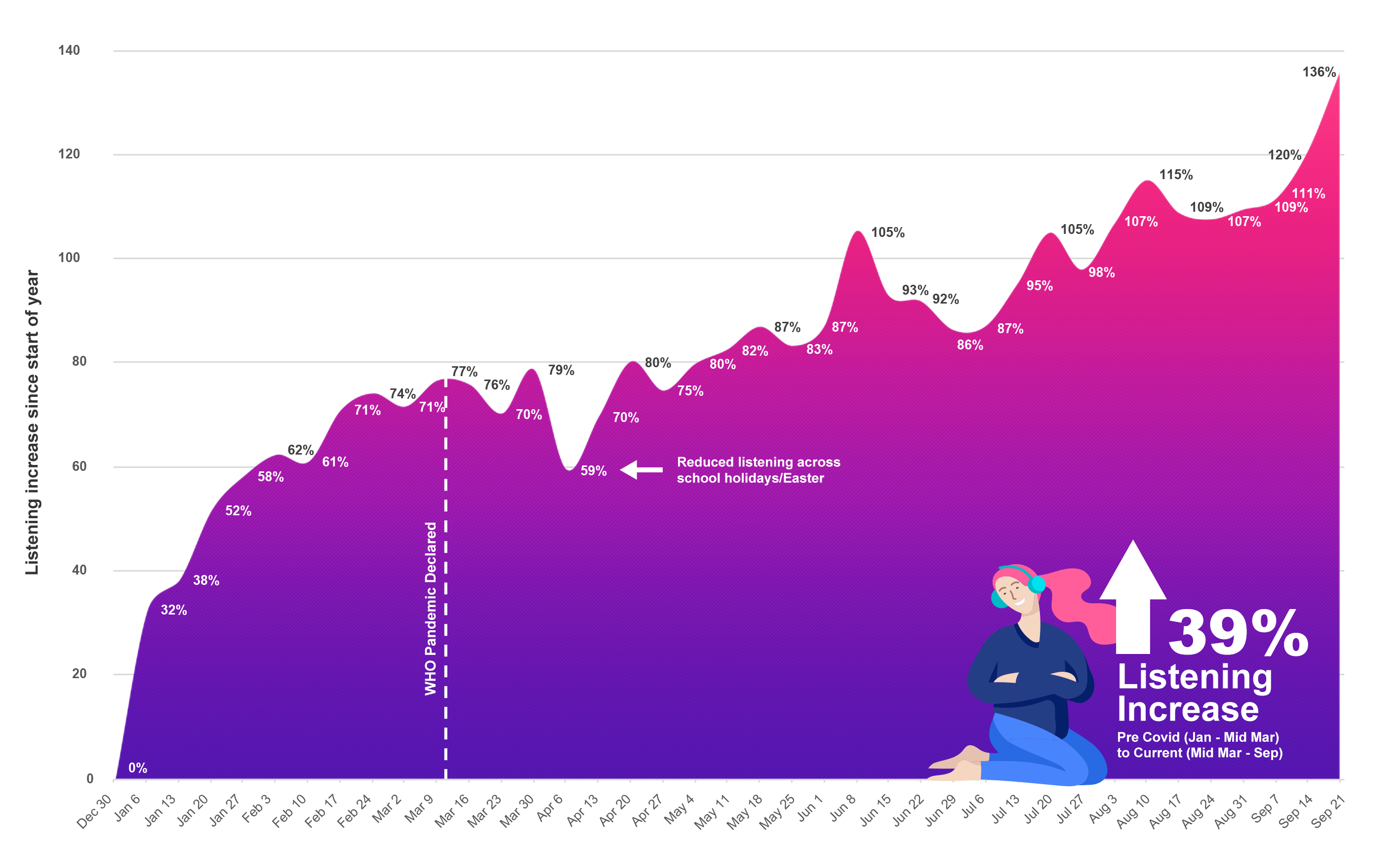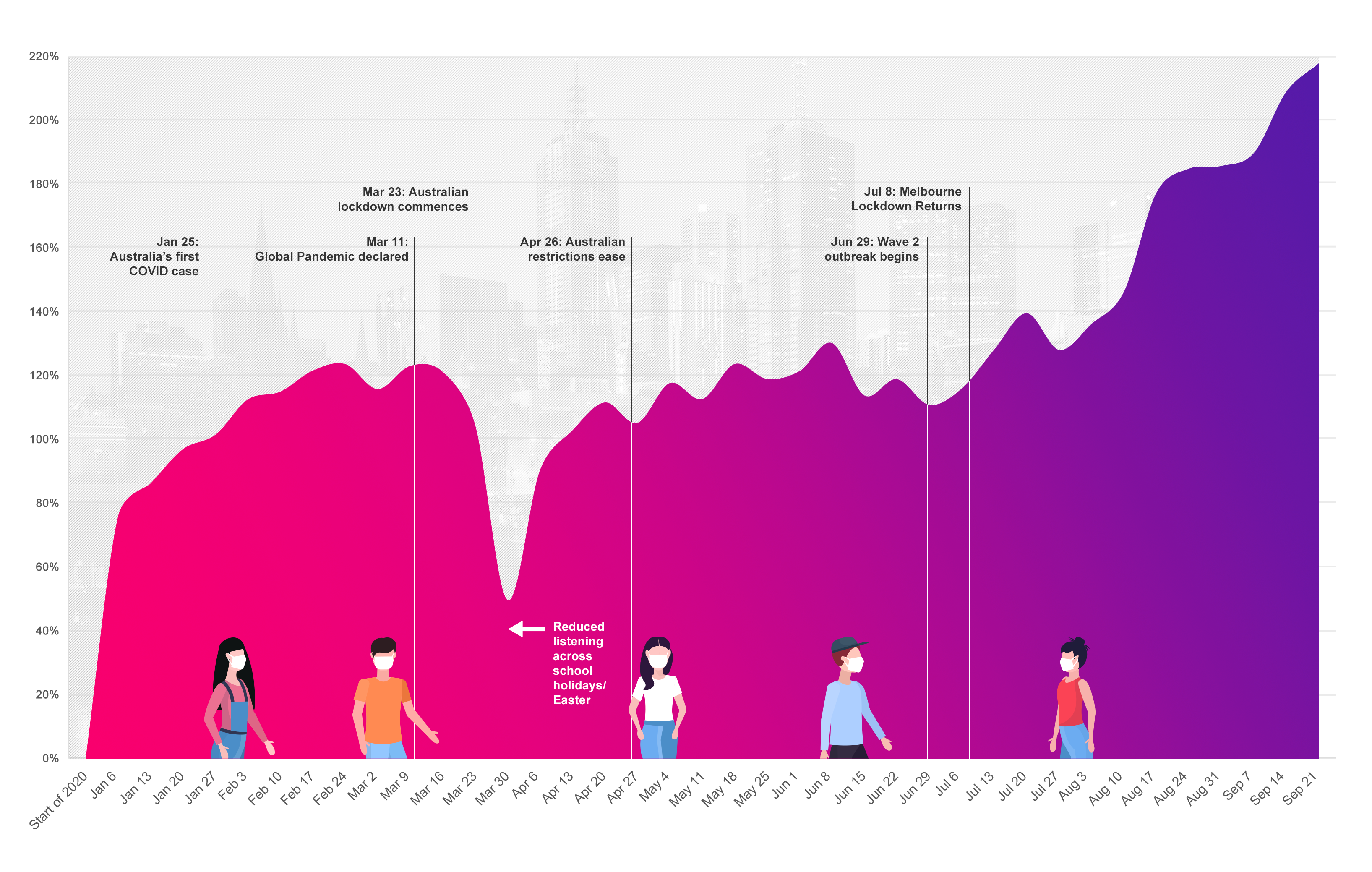Perhaps it takes me longer than most to catch up with the latest jargon, but it seems as if it was only the other week that I first became aware of the term “linear radio.”
Radio, of course, has always been linear. It’s just that we had no need to label it as such until we had to differentiate it from newly added options as they became available. Catch-up radio and radio on-demand, both of which could be categorised as podcasting, were probably inevitable given the public’s appetite for catch-up and on-demand television.
What also now seems inevitable is the migration of audiences towards the internet because online and mobile are the only platforms that can deliver on-demand content, as well as stream live or “linear” content, now that the NBN has rendered the internet fast enough for the task. A current 4G mobile service can deliver data at near double home NBN speeds while 5G promises to overtake both.
What’s surprised most industry observers, including this one, is the rapid rate at which listeners are embracing this new paradigm. As SCA’s Chief Content Officer, Dave Cameron, told us on survey day a couple of weeks ago, on demand radio has “gone through the roof.”
Both SCA and ARN have released separate data that quantifies that sentiment.
SCA reports that its live radio streaming audience has jumped by 58% year on year, making digital audio the fastest growing advertising platform.

Source:
*Adswizz Audiometrix September 2019 v September 2020
Here’s the kicker: “The great opportunity for radio will be to continue to migrate linear audiences over to becoming digital signed-in ‘known’ listeners,” says Campbell. “And this addressable audience will deliver high value for clients whether they’re streaming live or downloading later. The power of original content creation remains incredible.”
ARN’s results have come from a study that was designed to measure audience movements due to the pandemic. Nonetheless, ARN’s data points in the same direction as SCA’s. importantly both Cameron and ARN’s Content Head, Duncan Campbell agree that the trend towards digital won’t subside after COVID does.
Says Campbell, “This trend in greater consumption of podcasts and on-demand radio content has been accelerated by COVID due to the disruption in the workday routine which meant more entertainment choices at home and this trend is not expected to subside with the reduced impact of the virus over time but continue as those introduced to podcasts and on-demand radio make these choices part of their digital audio menu going forward”
Key Takeouts
- Total podcast listening is up 5% month on month (graph 1)
- Total podcast listening is up 39% since pandemic was declared (graph 1)
- Although the pandemic hit Victoria much harder than the other states resulting in massive listener movement from FM to AM stations, Victorian podcast listening increases are in line with the rest of the country. (graph 2)
- 8 out of 10 podcast genres are up month on month (the two that were down were only down 1-2%). (graph 3)
- Catchup Radio is up 20% with a record high, now the 2nd biggest genre. (graph 3)
Graph 1

Graph 2

Graph 3


Peter Saxon
Subscribe to the radioinfo flash briefing podcast on these platforms: Acast, Apple iTunes Podcasts, Podtail, Spotify, Google Podcasts, TuneIn, or wherever you get your podcasts.




Where is the percentage of the audience listening to streaming as compared to the total audience including live radio, particularly digital and AM/FM radio. As compared to percentage rises, which can be off a very low base
What is the cost to the broadcaster for streaming compared to the cost of DAB+ broadcasting which is considerably cheaper than AM and less so for FM?
What is the cost to the listener in using streaming particularly via a mobile phone as compared to free listening to broadcast radio? Will the Telco cost of plans increase to pay for the additional capacity required for large scale distribution of sound, particularly when each listener has to have their own signal path in both directions? When compared to broadcast which is single direction and only one program shared by all listeners.
Lastly, for the high data rate 5G which is not available in Australia, cell base stations are a maximum of 900 m apart, the signal will not travel through terrain, buildings wet trees... For reception in buildings a antenna/receiver/transmitter has to be mounted on the outside and a wifi transmitter/receiver on the inside.
If there is a lesson in expanding to streaming services, "The Australian", 5-11-2020 reports on Foxtel rationalising its streaming services. It includes closing apps, https://www.theaustralian.com.au/business/media/fox-sports-to-can-apps-and-focus-on-website-foxsportscomau/news-story/28d55046d782558239bebc1966d51013 .
It does not mean that streaming services will go away, but this is a lesson in determining what is good for customers.
Similarly, with the cost of setting up a home studio, there are a plethora of podcasts being made. Not all producers of podcasts survive for very long unless you have deep pockets in either or both resources and time OR love the topic covered in the podcast.
Great podcasts are to the point, for example the ABC's "Coronacast" or many ABC radio programs uploaded as podcasts. Other podcasts are too chatty that could be said in five minutes. For example this site discussed a podcast about bullying from a "traffic reporter" and other talent.
Thank you,
Anthony of exciting Belfield